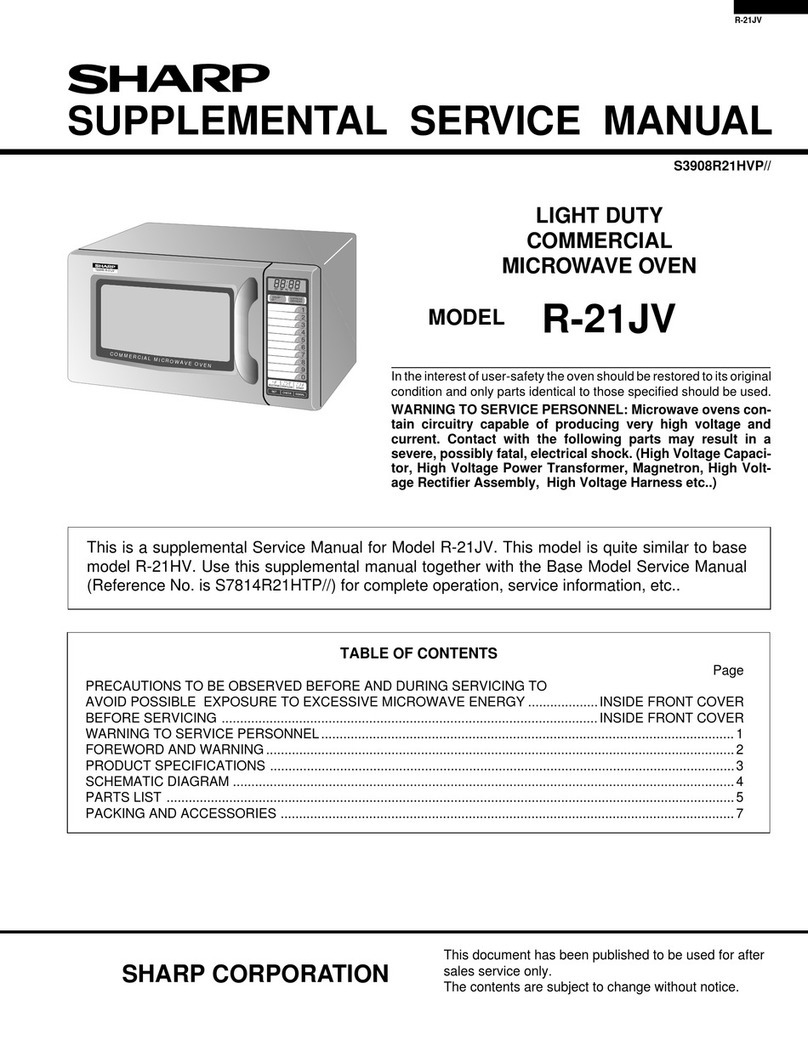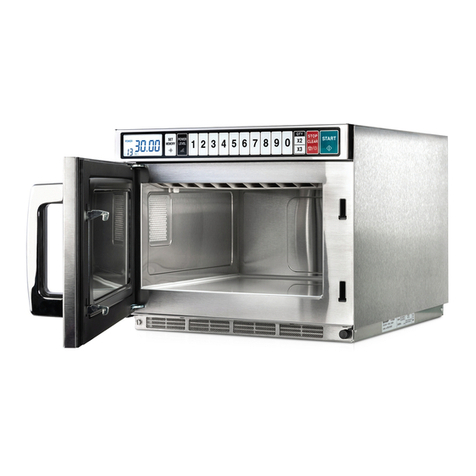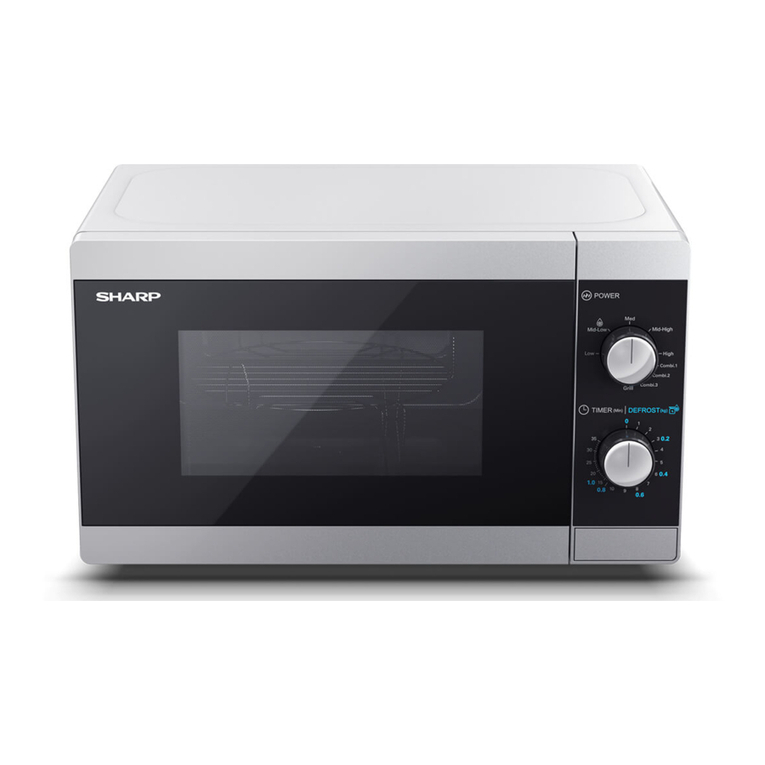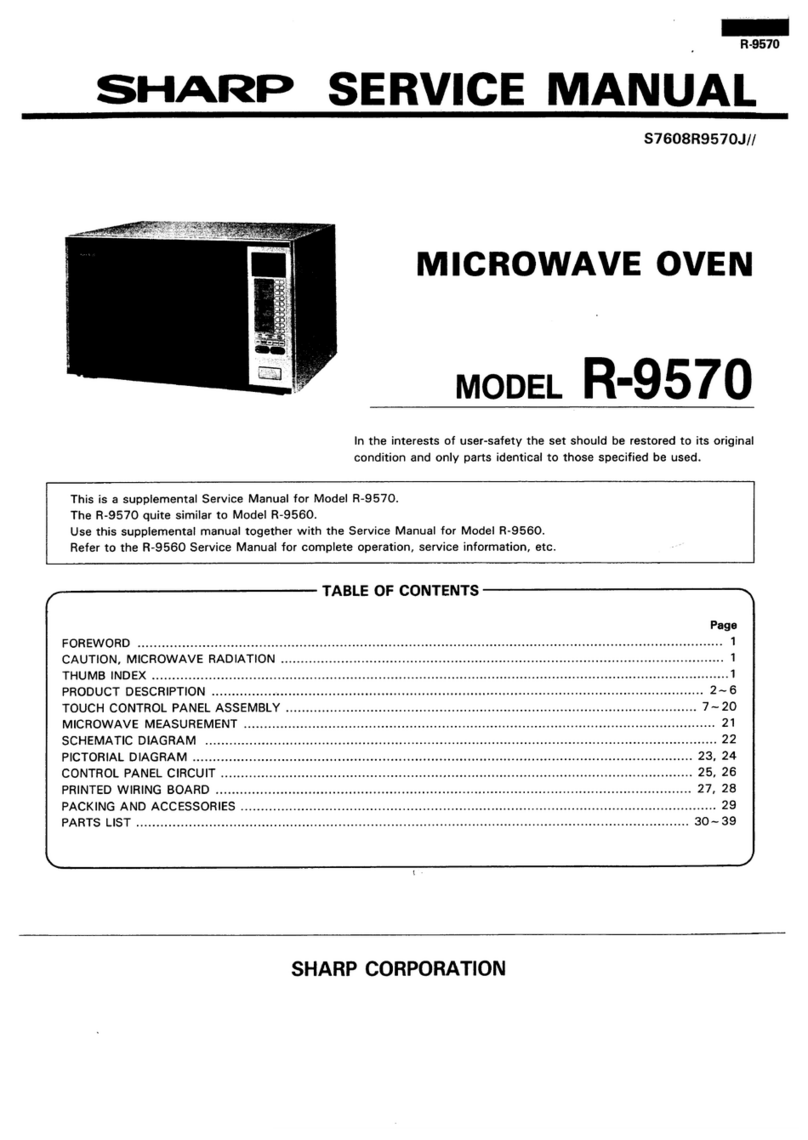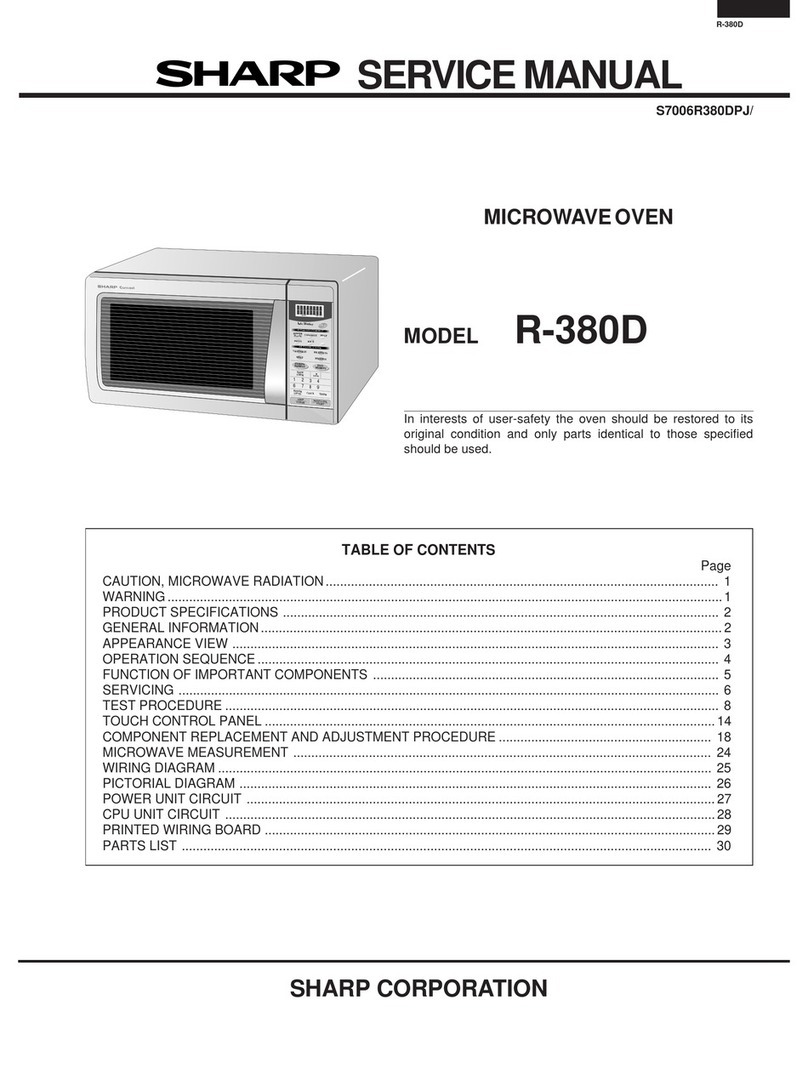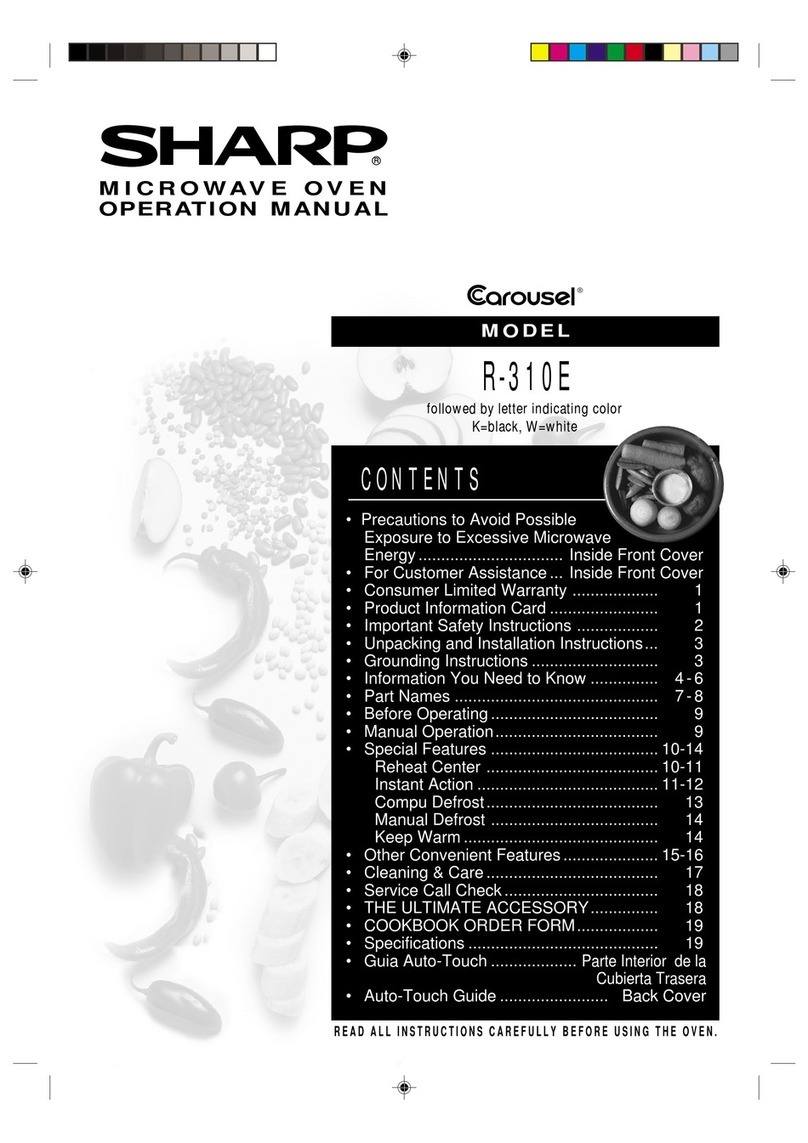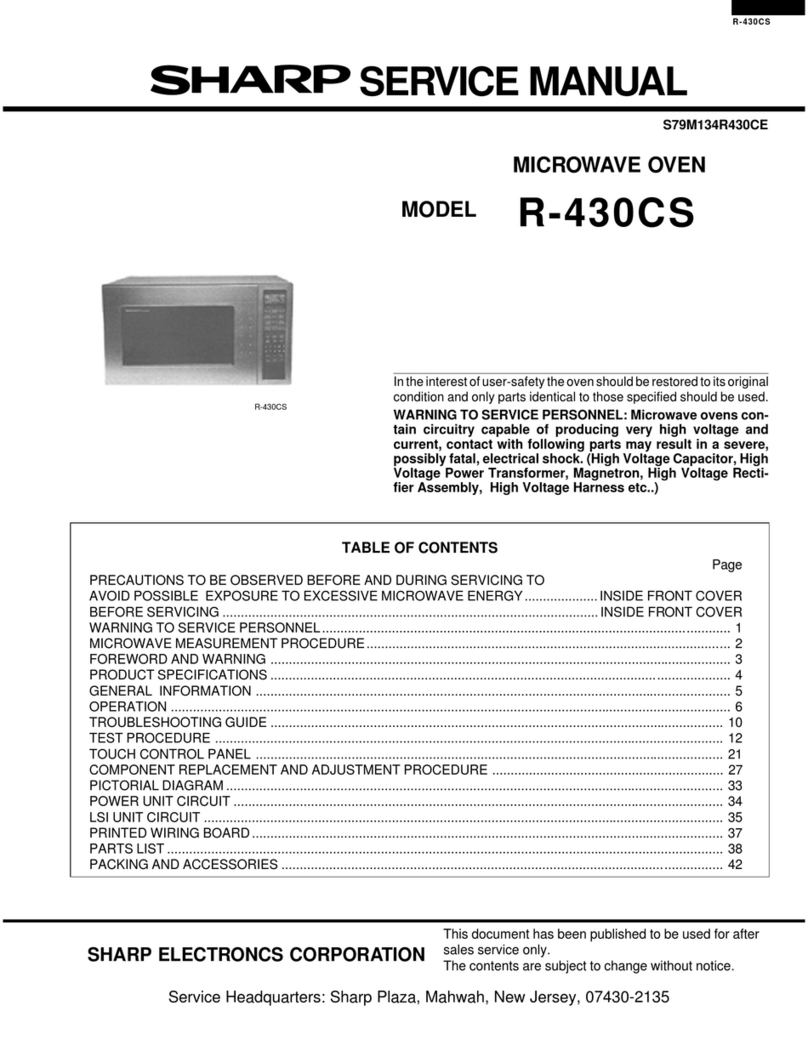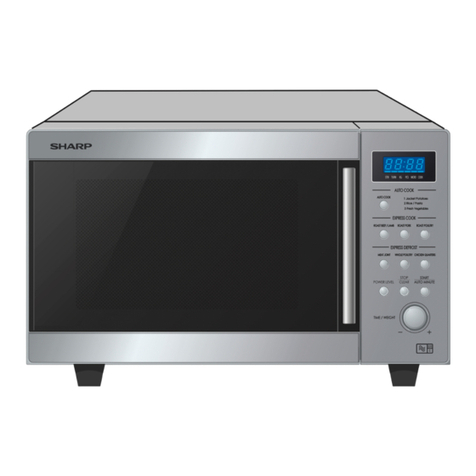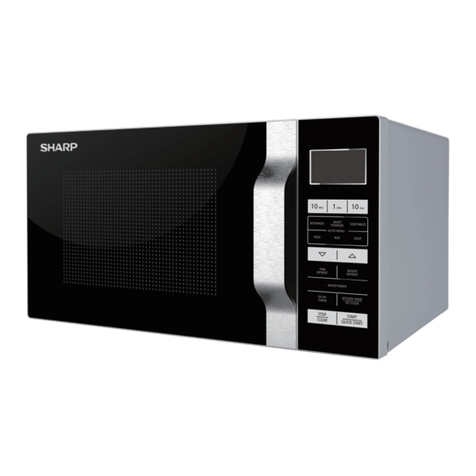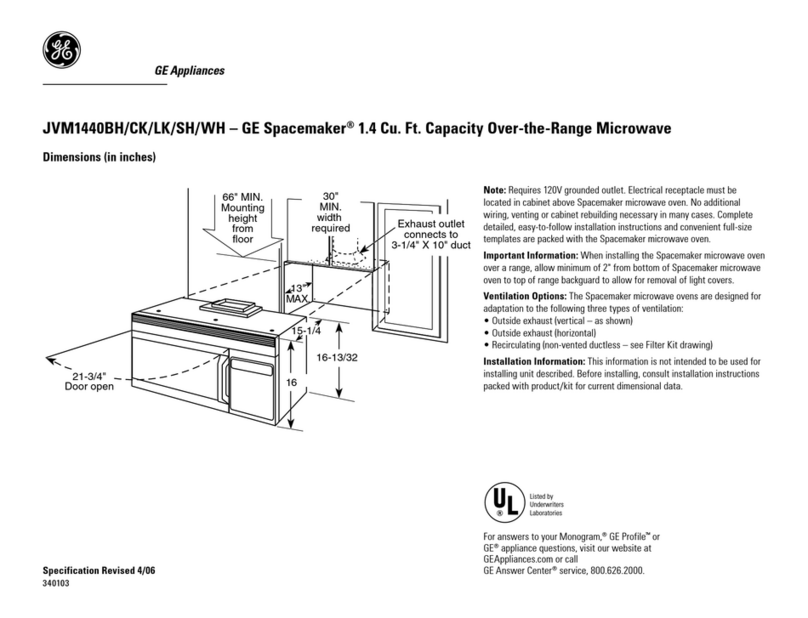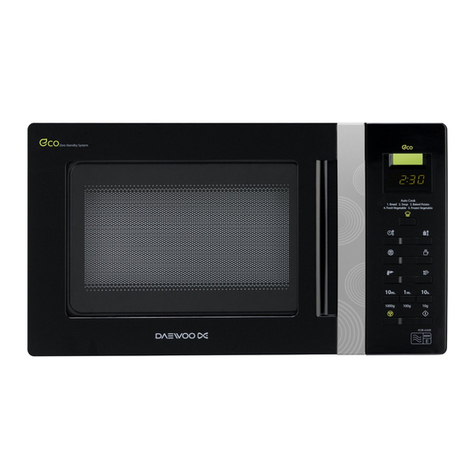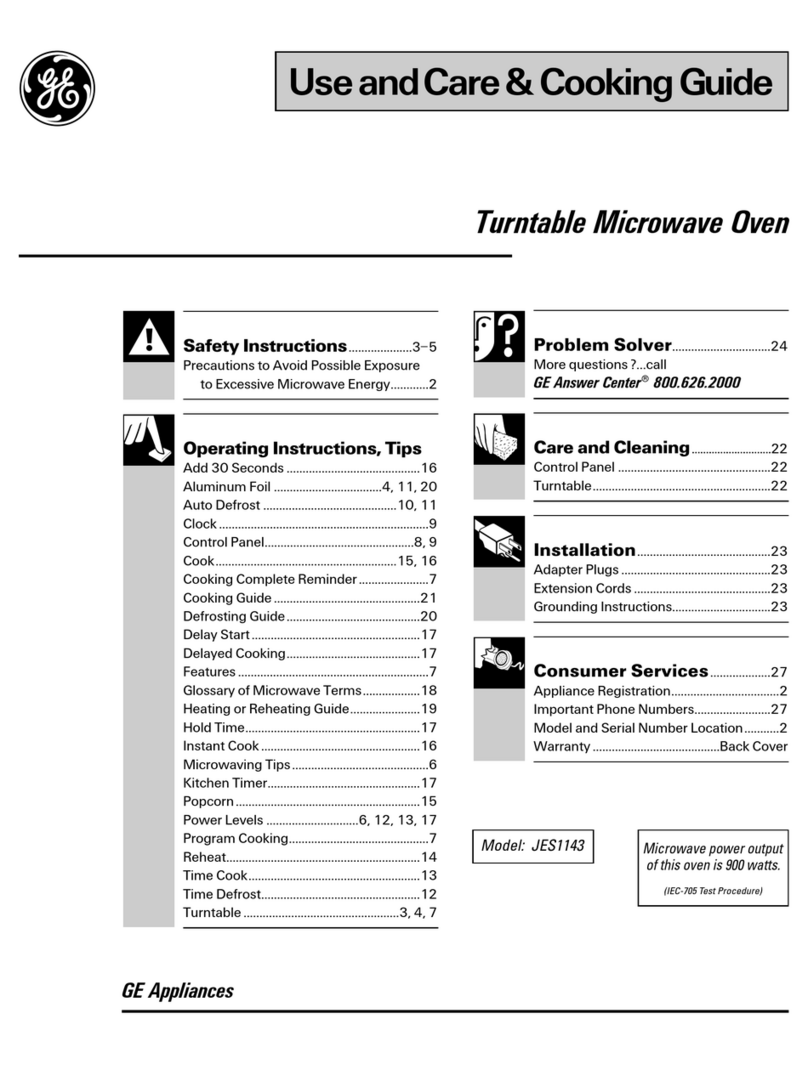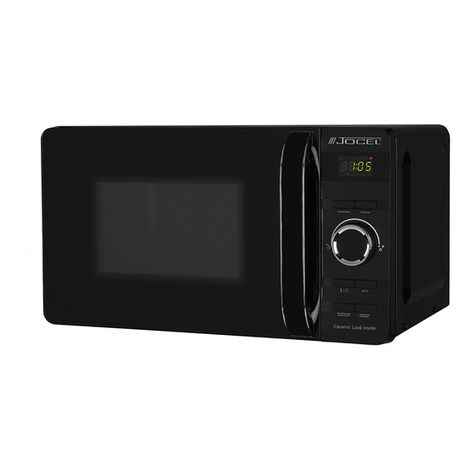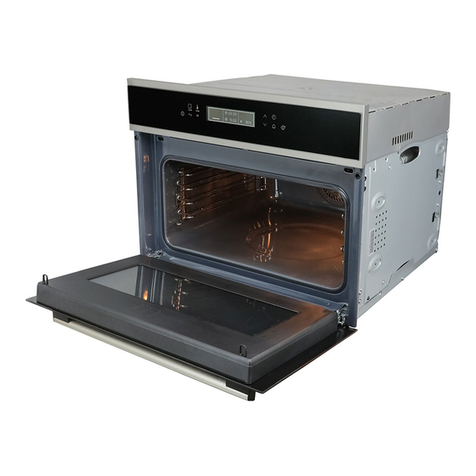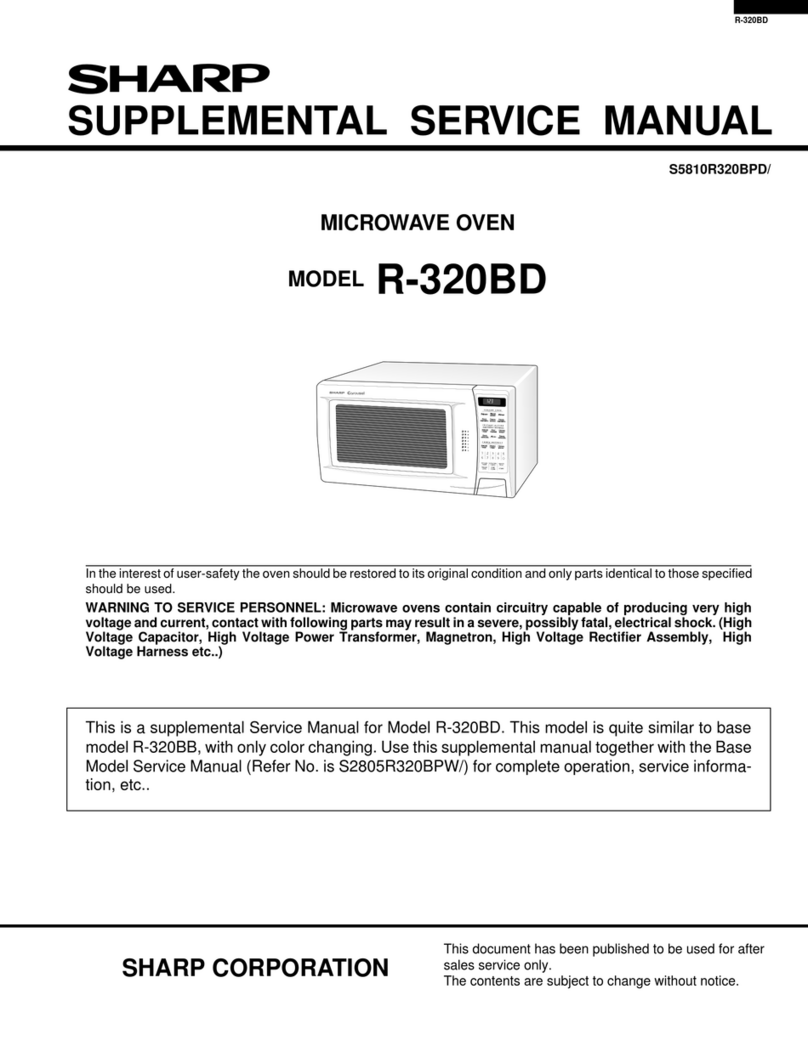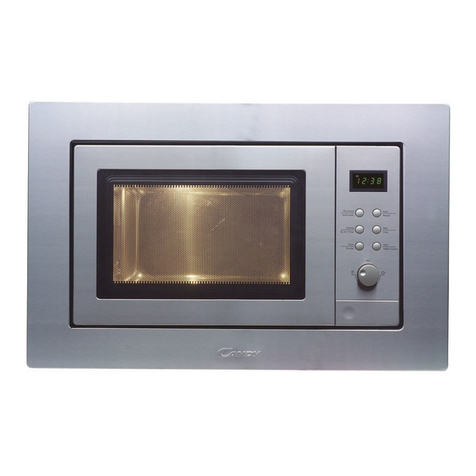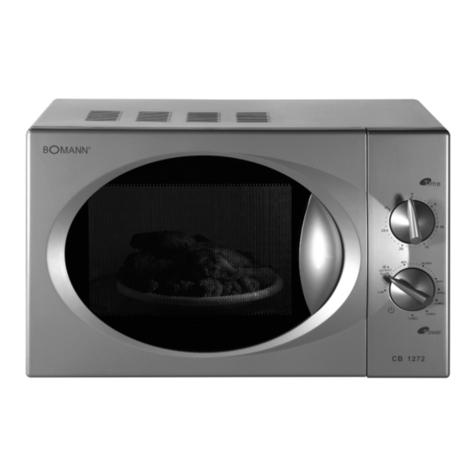
8
R-310AK
R-330AK
R-330AW
(1) Structure of Absolute Humidity Sensor
The absolute humidity sensor includes two thermistors as
shown in the illustration. One thermistor is housed in the
closed vessel filled with dry air while another in the open
vessel. Each sensor is provided with the protective cover
made of metal mesh to be protected from the external
airflow.
(2) Operational Principle of Absolute Humidity Sensor
The figure below shows the basic structure of an absolute
humiditysensor.Abridgecircuitisformedbytwothermistors
and two resistors (R1 and R2).
The output of the bridge circuit is to be amplified by the
operational amplifier.
Each thermistor is supplied with a current to keep it heated
at about 150˚C (302˚F), the resultant heat is dissipated in
the air and if the two thermistors are placed in different
humidity conditions they show different degrees of heat
conductivityleadingtoapotentialdifferencebetweenthem
causing an output voltage from the bridge circuit, the
intensity of which is increased as the absolute humidity of
the air increases. Since the output is very minute, it is
amplified by the operational amplifier.
(3) Detector Circuit of Absolute Humidity Sensor Circuit
This detector circuit is used to detect the output voltage of
the absolute humidity circuit to allow the LSI to control
sensorcookingoftheunit. Whentheunitissetinthesensor
cooking mode, 16 seconds clearing cycle occurs than the
detector circuit starts to function and the LSI observes the
initial voltage available at its AN1 terminal.
Withthisvoltagegiven,theswitchesSW1toSW5intheLSI
are turned on in such a way as to change the resistance
valuesinparallelwithR107~R111.Changingtheresistance
values results in that there is the same potential at both F-
3terminaloftheabsolutehumiditysensorandAN0terminal
of the LSI. The voltage of AN1 terminal will indicate about
-2.5V. Thisinitialbalancingissetupabout16secondsafter
the unit is put in the Sensor Cooking mode. As the sensor
cooking proceeds, the food is heated to generate moisture
by which the resistance balance of the bridge circuit is
deviated to increase the voltage available at AN1 terminal
of the LSI.
Then the LSI observes that voltage at AN1 terminal and
compares it with its initial value, and when the comparison
rate reaches the preset value (fixed for each menu to be
cooked), the LSI causes the unit to stop sensor cooking;
thereafter,theunitgoesinthenextoperationautomatically.
When the LSI starts to detect the initial voltage at AN1
terminal 16 seconds after the unit has been put in the
SensorCookingmode,ifitisnotpossibletobalance,ofthe
bridgecircuit due todisconnectionofthe absolute humidity
sensor,ERROR will appearonthe displayandthe cooking
is stopped.
1) Absolute humidity sensor circuit
ABSOLUTE HUMIDITY SENSOR CIRCUIT (R-330AK/AW)
C
S
R3
R1
R2
+
-
Operational
amplifier Output
voltage
S : Thermistor
open vessel
C : Thermistor
closed vessel
2
Absolute humidity (g/m )
Output voltage
Absolute humidity vs,
output voltage characterist
Sensing part
(Open vessel) Sensing part
(Closed vessel)
Thermistors
ventilation opening for sensing
Pin No. Signal I/O Description
40 COM3 OUT Common data signal: COM1.
Connected to LCD (Pin No. C3)
41 COM4 OUT Terminal not used.
42 VDD IN Power source voltage input terminal.
Connected to GND.
SW1
SW2
SW3
SW4
SW5
R47
R46
R45
R44
R43
LSI
(IC1)
AN0
AN1
620k
300k
150k
75k
37.4k
19
10
9
22
23
21
20
47k
47k
IC2 10k
0.01uF
0.015uF
0.01uF
R102
360k
+
-
VA : -15V VA : -15V
R90
C101
C102
C103
C104
S
F-2 1.8k
F-1
F-3C3.57k
3.32k
VC : -5V
0.1
uF
C. Thermistor in
closed vesssl
S. Thermistor in
open vessel
R107
R108
R112
R105 R101
R103 R104
D101
R109
R110
R111
R106

